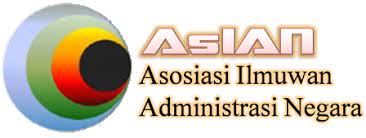Literacy for Peace: A Program to Prevent Bullying and Promote Positive Character in Elementary School
DOI:
https://doi.org/10.36085/jams.v5i2.8167Keywords:
Program literasi,, Anti perundungan, Karakter positif, Sekolah dasarAbstract
Bullying in schools can harm children' mental and emotional well-being and possibly result in poor character traits down the road. Bullying has negative effects on learning environments, trauma, and self-confidence. It is crucial to put bullying prevention into practice in order to address this problem. In the community, at school, and at home, literacy activities help youngsters develop morality and comprehend information. This community service was provided using an organized way during the PPL 1 Program at SDN Silih Asuh 2. Enhancing the pupils' literacy culture is the goal of this community service project. Through the "True Friends Do Not Bully" exercise, SDN Silih Asuh 2's literacy program blends character education with literacy abilities. The community service includes preparation, cooperation with guiding lectures and supervising teachers, and the execution of socializing and contests. In addition to outreach initiatives involving students in grades 1–6, this activity includes poetry, short story writing contests, posters for higher classes, and coloring pages for younger grades. Students' creativity is stimulated and literacy is improved through this practice. Students' writing abilities, creative expression, and comprehension of anti-bullying principles are all enhanced as a consequence of this set of exercises. Additionally, there are tangible results in the shape of a book that compiles the students' best poetry and short tales. Because it encourages the integrated development of students' literacy and character, this activity can be used as a model by other educational institutions.
References
OLWEUS, D. (1993). Bullying at school: What we know and what we can do. Malden, MA: Blackwell Publishing. DOI: https://doi.org/10.1002/pits.10114
Zhang, D., Osberg, T. M., & Phipps, S. (2020). Bullying and mental health: A meta-analytic review. School Psychology Review, 49(2), 160 173https://doi.org/10.1080/2372966X.2020.1739355
Rigby, K. (2017) Bully in schools: and what to do about. Acer Press. Diakses Januari 2025 Bullying in Schools: And what to Do about it - Ken Rigby - Google Buku
Puspita, yuni, & Eceh Trisna Ayuh. (2024). Bullying Education In Primary School Children 62 Padang Pelasan Seluma District. JURNAL ABDIMAS SERAWAI, 4(3), 113–124. https://doi.org/10.36085/jams.v4i3.7116
Sofyan, A., Hidayat, R., & Nuraini, D. (2022). Fenomena bullying di sekolah dasar dan strategi pencegahannya. Jurnal Pendidikan Karakter, 12(3), 410–421.
Sari, L. P., Wibowo, A., & Widodo, P. (2024). Dampak bullying terhadap perkembangan mental siswa sekolah dasar. Jurnal Psikologi dan Pendidikan, 10(1), 22–31.
Tawasako, Y., Nurhalimah, & Gunawan, R. (2023). Implementasi literasi dalam pembentukan karakter siswa sekolah dasar. Jurnal Literasi dan Pendidikan, 5(2), 88–95.
Abdurahman, Mila Agustini, Hany Novandina Maharani SY, & Sakinatul Fajariyah. (2022). Peningkatan Kemampuan Literasi Melalui Program Kampus Mengajar Angkatan 2 2021. JURNAL ABDIMAS SERAWAI, 2(2), 53–60. https://doi.org/10.36085/jams.v2i2.4611
Piaget, J. (1952). The origins of intelligence in children (M. Cook, Trans.). New York, NY: International Universities Press.
Bandura, A. (2006). Adolescent development from an agentic perspective. In F. Pajares & T. Urdan (Eds.), Self-efficacy beliefs of adolescents (pp. 1–43). Information Age Publishing.
Thomas, J. W. (2000). A review of research on project-based learning. The Autodesk Foundation. https://www.bie.org
Condliffe, B. (2017). Project-based learning: A literature review. MDRC.
Vygotsky, L. S. (1978). Mind in society: The development of higher psychological processes. Harvard University Press.
King, L. (2022). Theories of human development: A comparative approach (2nd ed.). Sage Publications.
Wray, D., & Medwell, J. (2018). Teaching literacy effectively in the primary school (2nd ed.). Routledge.
Schunk, D. H. (2020). Learning theories: An educational perspective (8th ed.). Pearson Education.
Tompkins, G. E. (2019). Teaching writing: Balancing process and product (7th ed.). Pearson.
Gunning, T. G. (2020). Creating literacy instruction for all students (10th ed.). Pearson Education.
Heath, S. B. (2016). Words at work and play: Three decades in family and community life. Cambridge University Press.
Gardner, H. (2018). Multiple intelligences: New horizons in theory and practice. Basic Books.
Kemendikbud. (2020). Kebijakan merdeka belajar: Pendidikan karakter untuk penguatan profil pelajar Pancasila. Kementerian Pendidikan dan Kebudayaan Republik Indonesia.
Skinner, B. F. (2019). The technology of teaching. B.F. Skinner Foundation.
Graves, D. H. (2019). Writing: Teachers and children at work. Heinemann.
Kemendikbud. (2022). Profil pelajar Pancasila: Panduan penguatan karakter dalam kurikulum merdeka. Kementerian Pendidikan, Kebudayaan, Riset, dan Teknologi Republik Indonesia.
Rahman, A., & Setiawan, D. (2023). Program literasi berbasis nilai karakter untuk membentuk generasi berintegritas. Jurnal Pendidikan Karakter, 13(1), 45–56





